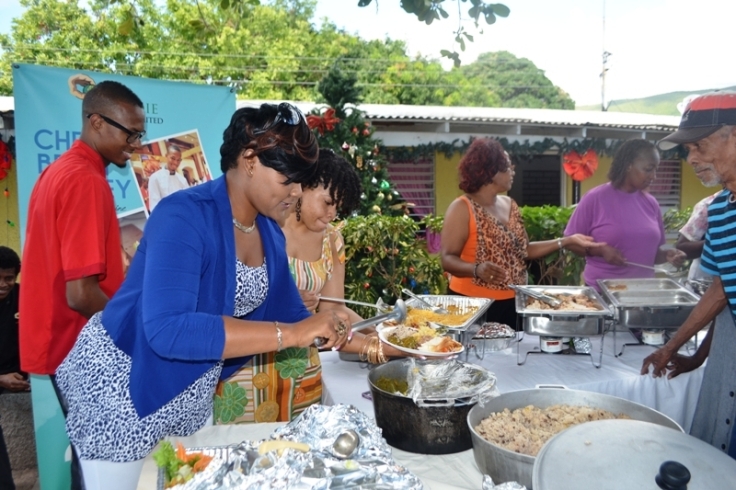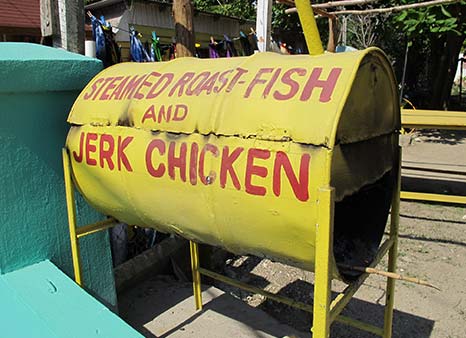Culture expressed by the Queen’s English Dictionary is expressed as customary beliefs, social forms, and material traits of a religious, social or racial group. Jamaica in particular is a very unique country known for its rich and ever riveting culture that Jamaicans try so hard to cling to. As our motto states “OUT OF MANY ONE PEOPLE” shows very evidently how diverse our culture is. Cultures have been mingling on Jamaica’s shores for hundreds of years. And while this mixture inspires pride, it is also the source of Jamaica’s characteristically brassy banter that, to an outsider, might seem inappropriate at times.
Although the main language of this island is English there is a tendency for the locals to cling to their linguistic language, Patois. This might seem awkward and uncivilized in some cases; however most Jamaicans are always peppering to call a girl “gyal” or to call a child “pikney” or to call male who acts like a girl “ galbwoy”. This language is very commonly used by the locals or persons living in rural areas. Words also are sometimes associated to person’s race/ethnic background such as “whitey”, ” browning”, “coolie” “miss.chin”, “blacka” and “redman”.
Religion
“Central to every aspect of folk life is the religious overtones which pervade it. People in folk societies have not yet separated their religious beliefs from their secular activities. “This quote from Barrett’s 1976 work, The Sun and the Drum: African Roots in Jamaican Folk Tradition contends that it is an exercise in abstraction to discuss Jamaica’s blend of African religions as a “component” of some lifestyle. Instead, there exists a peculiar gravity, perhaps a spiritual saturation, without which life itself is inconceivable. Some of the deepest rooted musical traditions are preserved within the context of religious practice, the ritual ceremonies that are part of this particular cosmology. In Jamaica, African folk religions served this purpose, even in combination with certain Christian denominations.
Religion is a very important part of the culture of Jamaicans and not much has seemed to change so much throughout the years; the rich African heritage lives on such as Pocomania, Kumina and Obeah; not only those but through the Christian belief and the Rastafarian Movement it strives also. Though discrimination the Revival Church still clings on to some of those African practices, at revival churches persons would wrap their heads with cloth and use chopsticks to keep it in place. The drum used by Africans for signaling and merriment is the main instrument which would be used to make music, persons would then dance to invoke spirits as in obeah, also rice would be thrown in the air during the precession and also the cutting of grapefruit and the use of cream soda would be common. This behavior could be dated as far back as the Akan People where these practices were prominent.
The Christian Church also evolved from those beliefs of our fore-parents; at church the main instruments are the tambourines and drums. A goat would be killed then the skin stripped, it would then be left to become dry or crisp, the skin would then be stretched over the frame of the instrument. The use of a big stick and two small ones to beat the drum were prominent; there were two types of drums each tightened differently to give a distinct sound.
At Christmas time there would be a Big Christmas Dinner which would be held in the rural area at the host’s grandparent’s home. At this dinner family members and very close friend would partake in the festivities and celebration of Christmas; on this day a large Christmas pudding would be baked accompanied by a big jug or red punch otherwise called sorrel. During this time of the year “no matta if yuh neva like yuh neibour” it would be common to see communal standards radiating from the hearts of persons in the community, it was made a point of duty that every “jackman” was fed and treated humanely.

Easter on the other hand was fully delimited around a superstition where a glass of water was acquired, persons would then break an egg and pour the egg white into the water, an image would then form and it was believed that what ever image was formed would determine your faith or be a part of your life. For example if the image was a casket, you would be bound to death. Other than that the main diet was fish and bread.
However what was seen religious to the Africans was considered harm to the Europeans such as obeah, the whites were afraid of this practice leading to the ban of it during slavery but it was quickly revived after. The Africans would do this practice to call upon their ancestors to help to ease their pain or as the song “Swing Low” say , swing chariot come to carry me home.
Ceremonies
When someone dies the main ceremony associated with this tragedy other than the funeral was the going away party for the dead, more prominently known as a nine-night or a set-up. At this party there would be singing and dancing and also the playing of games; this ceremony was held at the home of the dead. There would be a table in the middle of the precession where a white cloth would be used as a covering; on this table a bible and a “sankey” would be placed. From this table an individual would lead the other persons into songs from the “sankey” and also dancing, these songs would be liberating ones such as Amazing Grace. Dances would be performed such as kumina, dinkimini and brukins, to raise the adrenalin of the people , music would be made by either the beating of a drum or the scraping of a grater.
Activities such as forming a ring and playing “bruk them one by one” or forming a line and play the game “pass di ball and di ball can roll chignany pass and di ball roun.” were also prominent. Burials were usually held in a family plot.
Superstitions also played a vital role during deaths, such include: if a person had died and that person was bad, common pins would be placed in the feet of the dead as it was said they could not walk, if the dead was a mother with a young child the baby would be thrown over the grave 3 times so that the ghost won’t interfere with the child, lastly if a person had died it was customary to change all the linen in the home and turn over the mattress so that the “duppy” won’t be able to dwell.
Another ceremony that would be performed is a House Warming/Consecration . When a house is built before the prayer meeting was held a “consecration” of the house was done first ; where a the head of a goat or chicken was cut and then the blood would be sprinkled at the four corners of each room, which was to ward off “duppy”
A wedding was another prominent ceremony which was a custom to be held in a church. It was said that a dog should not eat of the wedding cake as it was seen as bad luck, also a groom should not see the bride before the wedding because it was also seen as bad luck. It was also customary for the fiancé to surprise the bride with her ring.
Arts, Dances, Customs
Because of the lack of fridges, there was always fresh meat to be eaten, however if a fish was not used for one day it was corned as well as beef and pork. The corned beef and pork were used to make soup or stew peas. Cow Tongue was eaten, it was corned and then boiled and cooked down with cabbage, no readymade seasoning was available; mostly herbs were used also because of the lack of ketchup “natta” was used to colour the oil. Jerk was also a main spice for meat.

Medicines were also made by our fore parent from mostly herbs; they were used for different purposes. For a cold, “jack ini bush”, “leaf of life”, “oralia/orelia leaf”, “elann burr” and “cold bush” were remedies. For a fever “wild barsell” would be rubbed in water and then put in the sun, the baby would then be bathe that had a fever, another herb used was “peri winkle” it would be rubbed up and then placed in the clothe of the child and it would draw the fever. Other herbs such as black coffee and rum, fever bush and sour sop leaves were also used. For pain cerci would be boiled and consumed and to accompany it chicken weed and “woman pa ba” was also used as remedies. Lastly for a cut a black and white capsule would be broken and then the powder inside would be poured in the cut and in “too toos” the cut would heal up. These medicines were used by our ancestors to heal ailments quickly, especially during slavery as they were termed as “macrons” if they were sick, these herbal medicines helped to keep the men fit and always strong for work.
The lives of Jamaicans has changed some what from the culture of their fore-parent but still some has been retained, the rich heritage of Jamaica lives on maybe not physically but in the hearts of the locals.
.





Leave a comment